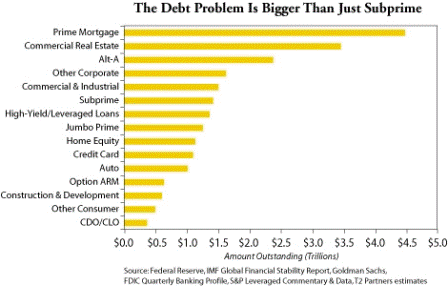The ‘problem’ is lack of income to service the debt, not the debt per se. Take a look at the personal income chart, particularly the interest income component.
Restoring the ability to pay restores the quality of the debt.
With the deficit terrorists in charge it’s going to continue ugly for a considerable period of time for the population at large.
Meanwhile, businesses figure out how to scratch out a living with less top line growth and modestly improving earnings, and banks benefit from the net interest margins at the expense of ‘savers’ pretty much offsetting their ongoing loan losses.
So who’s been the big winner this year to date?
Stocks up 50%, financials up more with record earnings in some cases.
Corporate bonds up as corporate borrowing costs fall.
Consumer interest rates remain high.
Household savings earning near 0.
Unemployment near 10%.
GDP now around flat and forecast to modestly improve.
Real wealth is again flowing upward.
>
> (email exchange)
>
> Take a look at this next chart, which has gained some currency in
> the worried circles of financial people. It’s worth a bit of study.
> It shows you the other dancers on the floor.
>

>
> The first thing to jump out at you is that subprime is only about
> a $1.5 trillion market – not anywhere near the biggest of the risky
> loans. There are other layers here.
>
[top]

